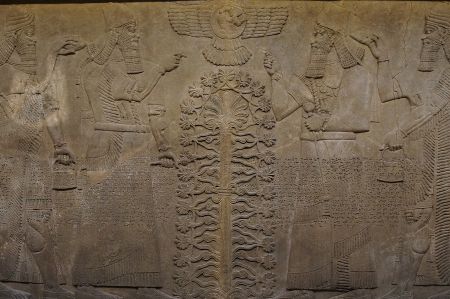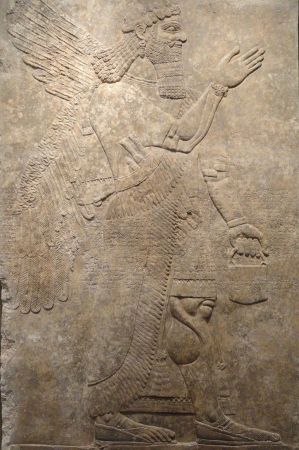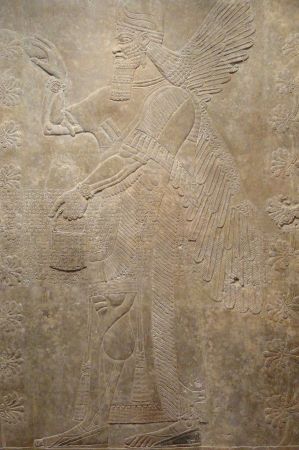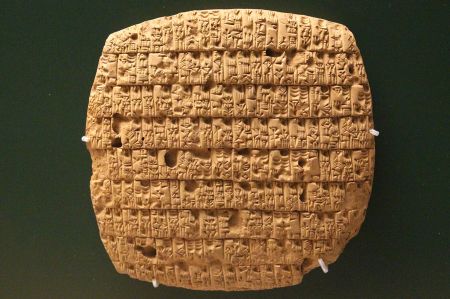Ziyaret Tepe - Assyrians did not rely on Scripture alone
- Written by Portal Editor
"The invention of recording systems is a milestone in human history. Any find that can help shed light on these milestones is therefore an important tool in understanding the progress of mankind," says researcher John MacGinnis in Cambridge Archaeological Journal, 2014. What is the background of this sentence?
Around 6,000 years ago in Mesopotamia there was already a city with tens of thousands of inhabitants, which was called Uruk. In order to provide this metropolis with all the necessities of life, an immense administrative effort was necessary, thousands of jobs had to be coordinated, a wide variety of commodities had to be ordered, traded and billed. Since written characters did not yet exist, Mesopotamian officials made do with small clay markers, a type of counting stone whose shape, size, and markings represented specific goods or quantities, called tokens.
Ziyaret Tepe, the site in south-eastern Turkey
 These tokens are found in excavations dating back to around 3,000 BC. But then a new invention spread in Mesopotamia: cuneiform writing. It made it possible for the first time to label goods, keep lists and document transactions in a sustainable manner. The Assyrians, who ruled Mesopotamia and parts of Anatolia until about 600 BC, also benefited from this invention. For them, writing has long been a natural part of culture. The prehistoric clay markers, on the other hand, were long forgotten - at least that's what was thought until now.
These tokens are found in excavations dating back to around 3,000 BC. But then a new invention spread in Mesopotamia: cuneiform writing. It made it possible for the first time to label goods, keep lists and document transactions in a sustainable manner. The Assyrians, who ruled Mesopotamia and parts of Anatolia until about 600 BC, also benefited from this invention. For them, writing has long been a natural part of culture. The prehistoric clay markers, on the other hand, were long forgotten - at least that's what was thought until now.
Ziyaret Tepe, the site in south-eastern Turkey in the province of Diyarbakir is threatened by the construction of the Ilisu Dam and has been under investigation for several years by teams from the universities of Akron (Ohio), Cambridge, Munich, Mainz and Istanbul (Marmara University) in investigated in a joint excavation project.
The excavation area of the Mainz team
 The region of the Upper Tigris came into existence in the middle of the 2nd millennium BC. in the dominion of the Assyrians, who established their provincial capital in Tushan, today's Ziyaret Tepe. According to historical inscriptions by the Assyrian ruler Ashurnasirpal II, the construction of an administrative palace in Tushan is dated 882 BC. secured. The excavation area of the Mainz team includes the area of the Acropolis, which must have been occupied by this governor's palace. Parts of the private living area and a courtyard have already been uncovered and explored. The rich furnishings of the main rooms not only include colourful wall paintings, but also, for example, equipment for a hearth. Tiled rooms prove the high living comfort at the beginning of the first millennium before Christianity.
The region of the Upper Tigris came into existence in the middle of the 2nd millennium BC. in the dominion of the Assyrians, who established their provincial capital in Tushan, today's Ziyaret Tepe. According to historical inscriptions by the Assyrian ruler Ashurnasirpal II, the construction of an administrative palace in Tushan is dated 882 BC. secured. The excavation area of the Mainz team includes the area of the Acropolis, which must have been occupied by this governor's palace. Parts of the private living area and a courtyard have already been uncovered and explored. The rich furnishings of the main rooms not only include colourful wall paintings, but also, for example, equipment for a hearth. Tiled rooms prove the high living comfort at the beginning of the first millennium before Christianity.
The most unusual discoveries include a total of five cremations in the area of a large courtyard area, two of which were undisturbed and contained very rich grave goods. In the rectangular pits, measuring around 1.5 m x 2.00 m, burned bones were unearthed in a considerable layer of ash, as well as numerous bronze vessels, rich stone and ivory vessels, engraved ivory inlays, seals and beads. These things indicate the high status of the people buried here, who must have been palace dwellers. The closest parallels to these objects can be found in the Assyrian capitals of Assur and Nimrud in what is now Iraq.
In addition to this year's cremation find, there was also a rare hoard of over 20 bronze vessels, including a jug, a wine ladle, a sieve, several bowls and cups, mostly made of hammered bronze, under the paving bricks of the courtyard. These are now waiting for a restorer to uncover their rich decorations, which are already visible under the layer of corrosion.
John MacGinnis of the University of Cambridge
 However, during the excavations in the ruined mound of Ziyaret Tepe in south-eastern Turkey, a completely different picture emerges. John MacGinnis of the University of Cambridge in England and his colleagues were examining the ruins of the Lower City when they made a surprising find:
However, during the excavations in the ruined mound of Ziyaret Tepe in south-eastern Turkey, a completely different picture emerges. John MacGinnis of the University of Cambridge in England and his colleagues were examining the ruins of the Lower City when they made a surprising find:
In two rooms of an administrative building in Ziyaret Tepe, they found not only numerous clay tablets, seals and weights, but also more than 300 tokens - some in the shape of simple spheres or discs, others triangular or in a stylized bull's head shape. Dating shows that these anachronistic administrative aids actually come from the Neo-Assyrian Empire - they were therefore still being produced a good 2,000 years after the invention of cuneiform writing and were apparently used intensively, as the researchers report. They were actually considered "extinct" for 5,000 years.
However, the purpose for which the Assyrians used their tokens has not yet been clearly proven. However, the researchers suspect that they served as temporary counters for cattle or grain: each farmer or cattle dealer brought a bag with these tokens, which represented his goods. During the sale, the counters were then passed from one official to the next until they finally arrived at a kind of goods issue.
Once the buyer had received his goods, the data was finally recorded on tablets, the tokens had fulfilled their task. "The tokens provided a reusable system for modifying and updating the status of transactions without wasting clay tablets," says John MacGinnis.
The finds show that the Assyrians used prehistoric clay tokens and cuneiform writing in parallel. In the Neo-Assyrian Empire, the combination of tokens and tablets was probably part of an empire-wide administrative system, the researchers explain. Because even in a society that is able to write, it can make sense to record information via several channels.
Please read as well:
